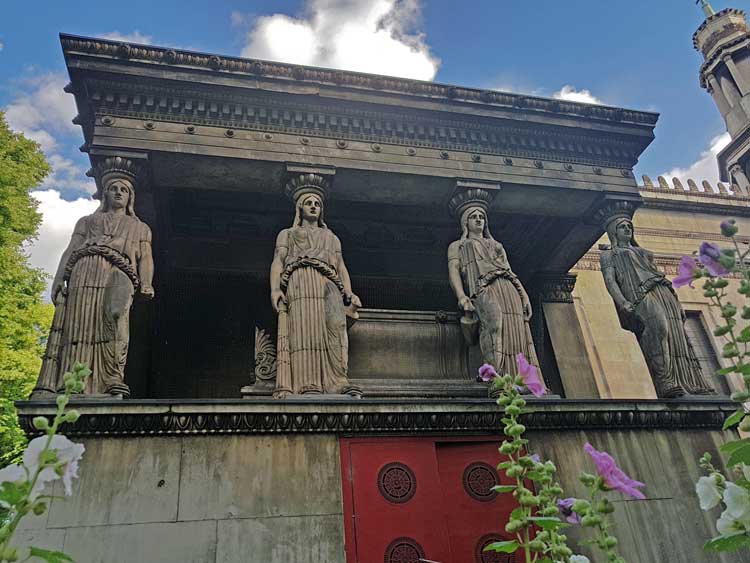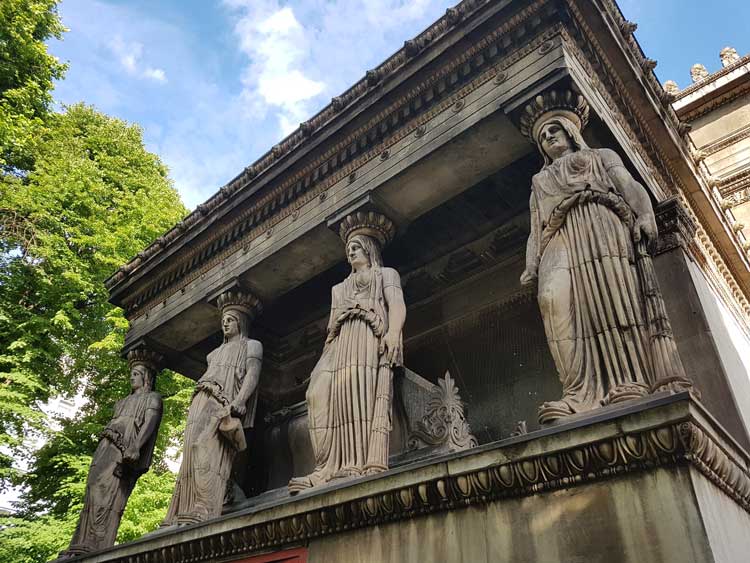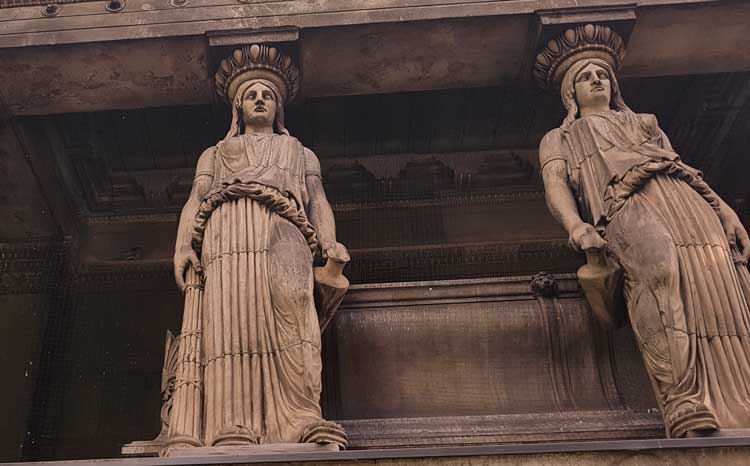
Commuters making their daily sprint, or drive, along the decidedly unlovely Euston Road, rarely pause to take a look at the magnificent exterior of St Pancras Church.
They don' know what they're missing!
The church was built between 1819 and 1822 to the design of local architect William Inwood and his son Henry William Inwood.
The church has the feel of ancient Greece about it, which, given the Inwoods based their design on the Erechtheum and the Tower of the Winds, both on the Acropolis in Athens, is, perhaps, unsurprising.
But the church's most notable features, at least from the outside, are the two sets of four caryatids - stone carvings of draped female figures, which are used as pillars to support the entablature above their heads - which stand above the north and south entrances to the Crypt.

These were modeled by John Charles Felix Rossi (1762 - 1839), and are based on similar figures on the Acropolis - although, in the case of the St Pancras caryatids, they differ from the originals in that each one of these holds an empty water ewer and an inverted, extinguished torch, as a symbol of their standing guard over the Crypt of St Pancras church.
The figures, which are of terra-cotta cemented together round pillars of cast iron, are massive, and, on close inspection, you can actually see the marks where the sections of each caryatid were joined.
It was this need to transport them in sections that led to one of the most oft quoted stories about the St Pancras caryatids - a tale that might be true, but which, equally, might be as tall as the figures themselves!
But, nonetheless, it is well worth repeating.
The story goes that, when the statues arrived to be put in place, they were, so it transpired, too tall to fit into the gap that they were intended to occupy on the porticos.
The only way they could install them was to either cut away or leave out the midriff of each figure.
This was done, and the problem was solved.
Except, this little bit of cosmetic, ceramic surgery left each figure looking somewhat truncated around the midriff, or as one commentator has eloquently put it:-
"The result is of a row of rather dumpy matrons, rather than the elegant Greek originals."
Personally I have mixed feelings about the veracity of the missing midriffs story.
Some of the statues do look somewhat squat when viewed from certain angles. But then others look serene and elegant. And, when all's said and done, one person's "dumpy matron" is another person's Elle Macpherson
In the example below, for example, I could believe that the story was true of the one on the left, but not of the one on the right.
So I suppose it is just a matter of perspective.

Anyway, whatever the truth of the story about the missing midriffs, the St Pancras caryatids are an absolute pleasure to gaze up at; and let's be honest, a little bit of Athens on the busy Euston Road has got to be worth a look.
So, next time you are in the vicinity of Euston Station, head over to St Pancras Church, and feast your eyes on a group of figures that are, really, very special and very wonderful.
Here endeth the lesson!